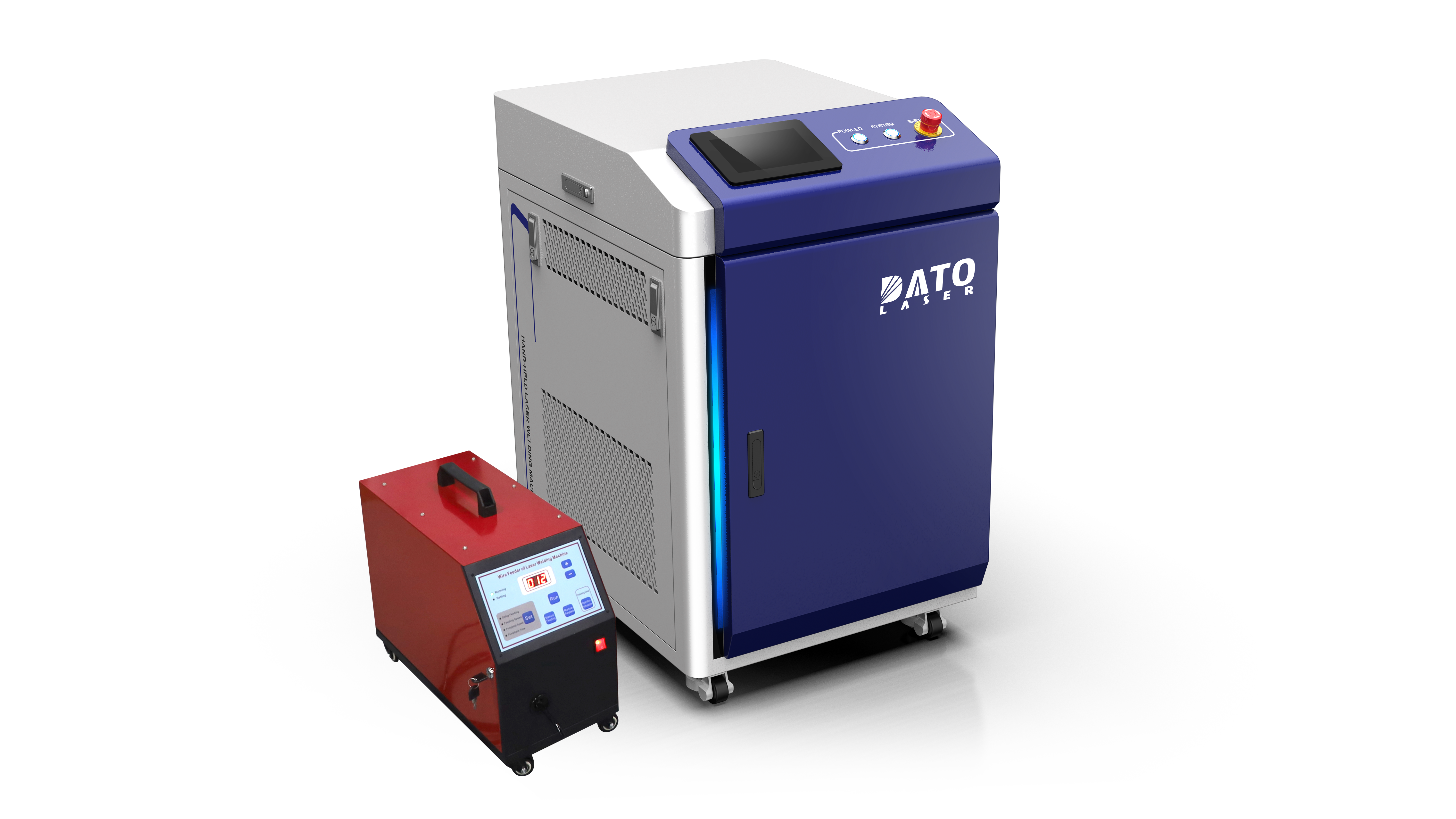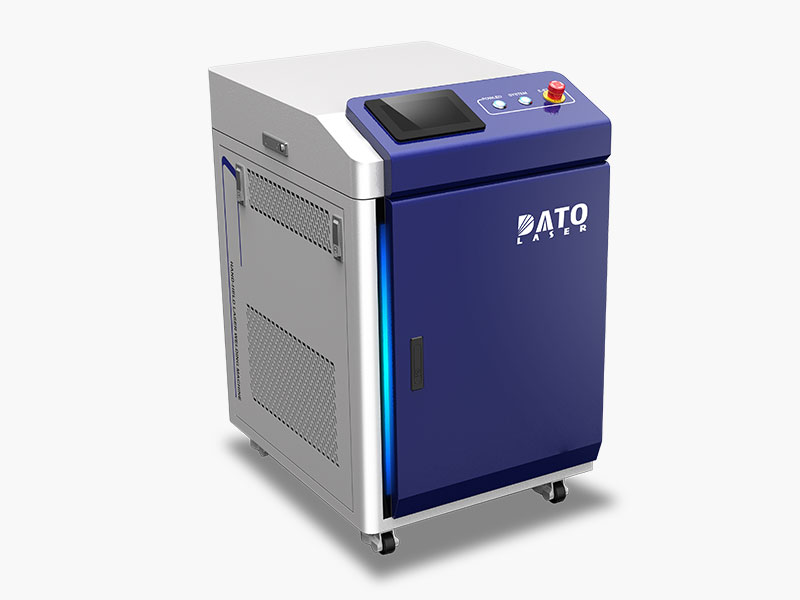How Material and Contaminant Types Influence Laser Cleaning Speed

Laser cleaning technology has revolutionized industrial maintenance and surface preparation, offering a precise, eco-friendly alternative to traditional methods. At DATO and Leapion, we specialize in advanced laser cleaning machines designed to optimize efficiency across diverse applications. A common question we encounter is: How does cleaning speed vary depending on the material and contaminant?
In this comprehensive guide, we’ll explore the intricate relationship between material properties, contaminant characteristics, and laser cleaning performance. By understanding these dynamics, businesses can make informed decisions to maximize productivity while minimizing operational costs.
Understanding the Fundamentals of Laser Cleaning
Laser cleaning operates by directing high-intensity laser pulses onto a surface. The energy from these pulses interacts with contaminants, causing rapid vaporization or ablation without damaging the underlying material. The process is highly controllable, enabling adjustments to parameters such as power, pulse duration, and scanning speed.
However, the effectiveness and speed of this process depend heavily on two critical factors:
The base material being cleaned (e.g., steel, aluminum, composites).
The type of contaminant (e.g., rust, paint, grease, oxides).
Let’s examine how these elements influence cleaning speed and how DATO and Leapion’s laser solutions are engineered to address these challenges.
How Base Material Affects Laser Cleaning Speed
The composition, reflectivity, and thermal conductivity of the base material significantly impact how efficiently a laser can remove contaminants. Below, we break down common industrial materials and their interaction with laser systems.
Metals: Steel, Aluminum, and Copper
Carbon Steel and Stainless Steel
Steel’s relatively low reflectivity and moderate thermal conductivity make it highly responsive to laser cleaning. Rust and oxide layers absorb laser energy efficiently, allowing for rapid removal. For example, DATO’s fiber laser cleaning machines can achieve speeds of 2–4 m²/hour when stripping rust from steel surfaces, depending on layer thickness.
Aluminum
Aluminum’s high reflectivity poses a unique challenge. The material reflects a significant portion of the laser’s energy, requiring optimized wavelengths (typically 1064 nm) and higher peak power to ensure effective contaminant removal. Cleaning speeds for aluminum are generally 10–20% slower than steel but remain far superior to abrasive methods.
Copper
With exceptional thermal conductivity and reflectivity, copper demands precise parameter adjustments. Ultrafast pulsed lasers are often employed to minimize heat diffusion, ensuring contaminants are removed without affecting the substrate.
Non-Metallic Materials: Composites, Plastics, and Stone
Carbon Fiber Reinforced Polymers (CFRP)
Laser cleaning is ideal for delicately removing resins or coatings from CFRP without damaging fibers. Lower power settings and shorter pulses are used, resulting in slightly slower but highly controlled cleaning.
Concrete and Stone
Removing graffiti or biological growth from stone surfaces requires careful energy calibration to avoid etching. DATO’s systems enable 0.5–1.5 m²/hour speeds for such applications, balancing efficiency with surface preservation.

Contaminant-Specific Challenges and Cleaning Rates
The nature of the contaminant—its composition, thickness, and adhesion strength—plays an equally critical role in determining cleaning speed.
Rust and Oxides
Light Surface Rust
Thin rust layers (≤50 µm) on steel can be cleaned at 3–5 m²/hour using a 200W pulsed laser. The process leverages the high absorption of iron oxide, allowing rapid ablation.
Heavy Scaling
Thick mill scale or stubborn oxides require higher energy density. DATO’s 500W systems tackle these layers at 1–2 m²/hour, ensuring complete removal without substrate damage.
Paints and Coatings
Organic Paints
Water-based or acrylic paints vaporize quickly under laser exposure, enabling speeds of 4–6 m²/hour. The lack of hazardous fumes makes laser cleaning ideal for eco-sensitive environments.
Epoxy and Polyurethane Coatings
Dense, chemically resistant coatings demand higher power and slower scanning speeds (1–3 m²/hour). Adjusting pulse frequency ensures thorough layer-by-layer removal.
Grease, Oils, and Adhesives
Non-ablative contaminants like grease require a different approach. The laser thermally decomposes these substances, with speeds ranging from 5–8 m²/hour for light oil films to 2–4 m²/hour for thick adhesives.
Biological Contaminants
Mold, algae, and lichen on surfaces like ship hulls or historical monuments are removed at 1–2 m²/hour. The laser’s precision prevents damage to delicate substrates.
Optimizing Laser Parameters for Material-Contaminant Combinations
Achieving peak efficiency requires tailoring laser settings to the specific material-contaminant pairing. Below are key technical considerations.
Wavelength Selection
1064 nm (Near-Infrared): Ideal for metals and most inorganic contaminants.
532 nm (Green): Better suited for highly reflective materials like copper.
355 nm (UV): Used for organic contaminants and sensitive substrates.
Power and Pulse Duration
High Power (300–1000W): Accelerates cleaning on thick contaminants but requires careful control to avoid substrate damage.
Short Pulses (Nanosecond Range): Minimize heat-affected zones (HAZ) on delicate materials.
Long Pulses (Microsecond Range): Enhance productivity on robust substrates.
Spot Size and Overlap
Larger spot sizes cover more area per pass but reduce energy density.
A 30–50% overlap between laser passes ensures uniform cleaning.
Case Study: DATO’s Laser Cleaning in Automotive Manufacturing
A leading automotive manufacturer faced challenges removing epoxy coatings from aluminum engine components. Traditional chemical stripping was time-consuming and environmentally harmful.
Solution: DATO deployed a 500W pulsed fiber laser with a 1064 nm wavelength. By adjusting pulse frequency to 200 kHz and scan speed to 1200 mm/s, the system achieved:
Cleaning Speed: 2.8 m²/hour
Surface Roughness (Ra): <1.5 µm (meeting post-cleaning machining requirements)
Cost Savings: 40% reduction compared to chemical methods
Best Practices for Maximizing Laser Cleaning Efficiency
Pre-Cleaning Analysis
Conduct material and contaminant testing to determine optimal parameters. DATO’s R&D team offers free sample evaluations for clients.
Modular System Design
Choose machines with adjustable power and interchangeable optics to handle diverse tasks.
Real-Time Monitoring
Integrate sensors to track cleaning progress and automatically adjust settings.
Maintenance Protocols
Regularly clean lenses and calibrate systems to sustain peak performance.

Why Choose DATO and Leapion for Laser Cleaning Solutions?
With over 16 years of expertise, DATO and Leapion combine cutting-edge technology with industry-specific knowledge. Our ISO 9001, CE, and FDA-compliant systems are trusted by manufacturers worldwide for:
Precision: Sub-micron control over cleaning depth.
Sustainability: Zero consumables and minimal energy use.
Scalability: Solutions for small workshops to full-scale production lines.
Related Blogs
-
 Exploring the Safety, Precision, and Industrial Benefits of Laser Surface CleaningIn today’s fast-paced industrial world, where quality, efficiency, and sustainability are top priorities, manufacturers are constantly seeking better ways to clean metal surfaces without compromising material integrityBlog
Exploring the Safety, Precision, and Industrial Benefits of Laser Surface CleaningIn today’s fast-paced industrial world, where quality, efficiency, and sustainability are top priorities, manufacturers are constantly seeking better ways to clean metal surfaces without compromising material integrityBlog -
 A Complete Guide by DATO and LeapionIn modern industry, surface preparation and maintenance play a crucial role in achieving high-quality manufacturing results. Laser cleaning machines have emerged as one of the most innovative, efficient, and environmentally friendly tools for removing contaminantsBlog
A Complete Guide by DATO and LeapionIn modern industry, surface preparation and maintenance play a crucial role in achieving high-quality manufacturing results. Laser cleaning machines have emerged as one of the most innovative, efficient, and environmentally friendly tools for removing contaminantsBlog -
 Laser cleaning machines are revolutionizing industrial surface cleaning by offering a faster, safer, and more eco-friendly alternative to traditional methods. Whether removing rust, paint, oil, oxide, or other surface contaminants, laser cleaning has become a cutting-edge solution in manufacturing,Blog
Laser cleaning machines are revolutionizing industrial surface cleaning by offering a faster, safer, and more eco-friendly alternative to traditional methods. Whether removing rust, paint, oil, oxide, or other surface contaminants, laser cleaning has become a cutting-edge solution in manufacturing,Blog -
 Introduction: Transforming EV Battery Manufacturing Through Laser TechnologyThe electric vehicle revolution has accelerated dramatically over the past decade, bringing with it unprecedented challenges and opportunities in battery manufacturing. As global automakers commit billions to electrificationBlog
Introduction: Transforming EV Battery Manufacturing Through Laser TechnologyThe electric vehicle revolution has accelerated dramatically over the past decade, bringing with it unprecedented challenges and opportunities in battery manufacturing. As global automakers commit billions to electrificationBlog












